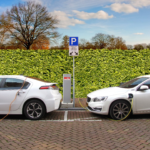Ford was leading the EV revolution with batteries that improve energy density, range, charging speed, and performance. At the same time, with its BlueOval innovations and partnerships, Ford is investing billions to bring to market powerful, sustainable, and cost-competitive batteries. The company focuses on the themes of longevity and recycling to minimize environmental impact while driving the world toward electric mobility faster.
What Ford EV Battery Technology is used?
Ford will replace its pricier lithium-ion or nickel cobalt manganese batteries with Lithium Iron Phosphate (LFP) batteries. These batteries are meant to offer more performance for less money, allowing Ford to ramp up EV production while enhancing profit margins.
What is the new EV strategy of Ford?
Ford’s revised electrification strategy has placed a greater emphasis on commercial vans, pickup trucks, and SUVs, and it has realigned its battery sourcing strategy in order to reduce costs and take advantage of tax incentives. The plan features hybrid SUVs for larger vehicles and an affordable electric vehicle platform launching in 2027.
What battery technology will replace lithium?
Several Next-Gen Batteries:Here are a few lithium alternatives that are currently being considered: Solid-State Batteries: Of these types of batteries, solid-state batteries use solid electrolytes instead of liquid ones, achieving features such as higher energy density and faster charging capabilities, as well as improved safety. Sodium-Ion Batteries: These batteries use sodium as opposed to lithium and are cheaper and more abundant. They also offer lower energy density at present. $Li-S$ Batteries: These can provide better energy density and can be lighter, but struggle with longevity and stability. Aluminium-Ion Batteries: These batteries significantly charge up faster than lithium-ion batteries, having improved capacity along with an affordable potential price, currently in the experimental phase. One example of an alternative where zinc-air batteries become attractive are their low weight with high energy density. Demand for more sustainable and efficient energy storage systems is driving research into such alternatives even as lithium-ion prevails.
What kind of battery is in a Ford?
Ford now uses primarily lithium-ion and lithium iron phosphate (LFP) batteries for its electric cars. These batteries deliver high energy density, long range, and charge quickly, complementing Ford’s portfolio of electric vehicles that includes the Mustang Mach-E and F-150 Lightning.
What are the three pillars of Ford’s battery electric vehicle strategy?
Ford does this through three customer-centric business units: Ford Blue, which designs celebrated gas-powered and hybrid vehicles; Ford Model E, which creates breakthrough electric vehicles and embedded software that provides customers with experiences worthy of the Ford brand; and Ford Pro, which empowers commercial customers with innovative solutions. Ford EV battery Technology is used.
Conclusion
Wrapping it up, Ford EV battery technology is an optimism in the near future of sustainable movement, Ford is developing advanced battery solutions, such as lithium-ion, lithium iron phosphate, and future technologies like solid-state batteries that maximize performance, minimize costs, and reduce environmental impact. Ford is also firmly oriented toward this challenge, thanks to ongoing investment in state-of-the-art research and smart partnerships that will herald a cleaner, greener, more sustainable transportation future.


